The management of inventory and assets plays a crucial role in the success and efficiency of businesses across various industries. Traditionally, manual tracking and documentation processes have been labor-intensive and prone to errors.
In today’s fast-paced business world, efficiency and real-time data are the forces of success. This is where bulk QR Codes enter and transform the way you manage resources.
Traditional methods of tracking and managing assets are being replaced by technology-driven solutions, with one innovation, in particular, gaining significant traction: the use of QR Code for inventory management.
This article delves into the utility of QR Code technology in inventory management and highlights how they are revolutionizing processes for better accuracy and scalability.
A. What is a QR Code

A QR Code, or Quick Response code, is a two-dimensional matrix barcode that stores information in a pattern of black squares arranged on a white square grid.
Developed in 1994 by Denso Wave, QR Codes are widely used for efficient data encoding and retrieval. They can store various data types, including URLs, text, and contact information.
QRs are scanned using smartphones or dedicated scanners, enabling quick access to information, such as website links or product details.
Their versatility and ease of use make QR Codes valuable for applications ranging from marketing and payments to inventory tracking in many industries.
B. The rise of QR Codes in inventory and asset management
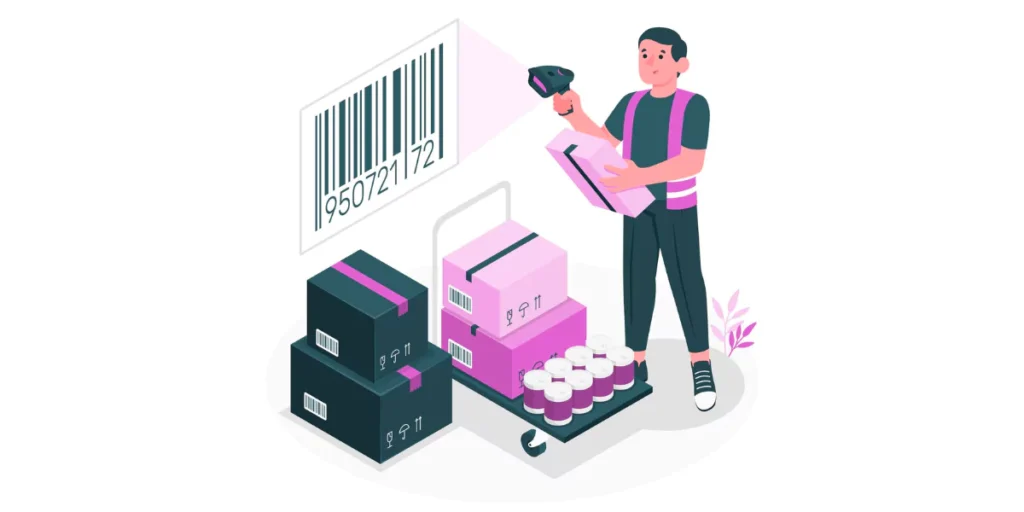
QR Codes were originally invented to track the parts of automobiles in 1994. With their ability to store substantial information in a compact space, QR Codes were later used to streamline inventory tracking and asset management, allowing businesses to easily monitor and update the status of their assets.
The simplicity and speed of scanning QR Codes with smartphones does away with manual data entry, reducing errors and improving overall accuracy.
Their ability to store large amounts of data and their quick scanning capabilities make them an ideal choice for organizations seeking to streamline their operations.
If you’re thinking about using QR Code technology for inventory management, you’ll need as many QRs as the items in inventory.
Here, a generic QR Code service won’t suffice. Why? Because it’s going to be a little too much to create the QR Codes one by one. You’ll rather need a bulk QR Code tool.
C. Understanding QR Code bulk operations
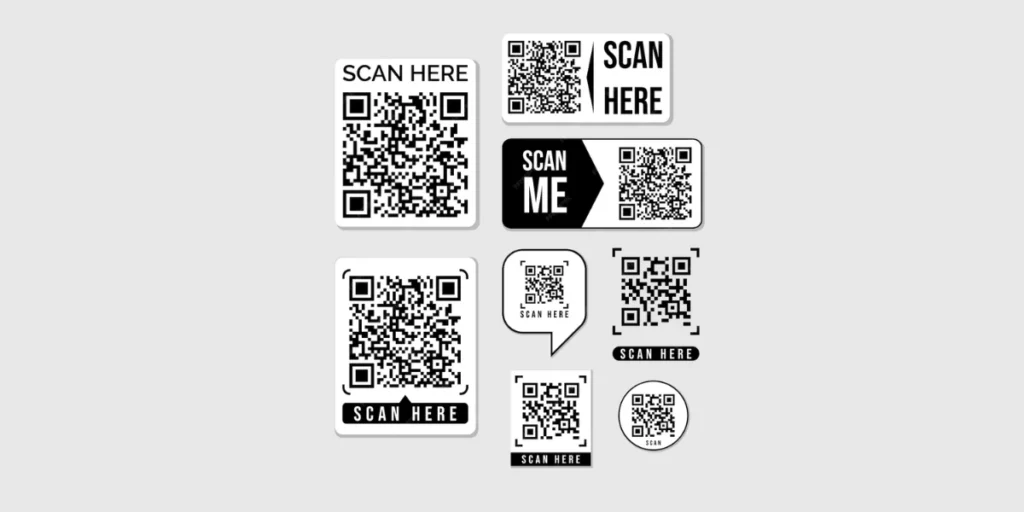
Bulk QR Codes refer to the generation of multiple QR Codes simultaneously, each containing unique information about a specific asset or product.
Rather than creating individual QR Codes one by one, businesses or individuals may need to generate a large batch of QR Codes in a single process.
And all of this happens with a few clicks within minutes. Now such a quick (and efficient) process is anyway the whole point of using QRs for inventory management in the first place, right?
D. Setting up a Bulk QR Code system
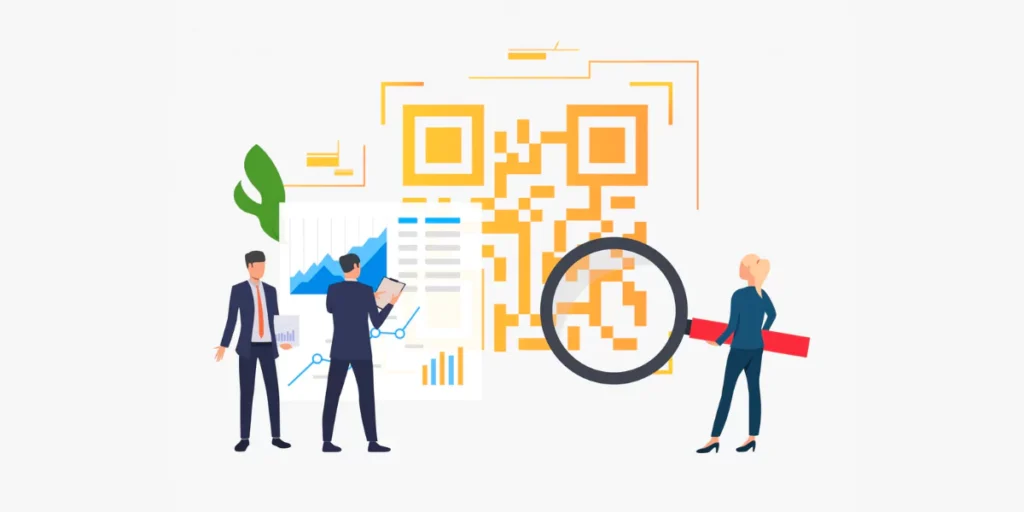
Implementing QR Codes for asset management involves a step-by-step process to ensure successful integration. Here are some prerequisites that you should consider while implementing bulk QR Codes.
1. Define asset management needs
First things first, you should clearly articulate the goals and requirements of the asset management system.
You can do so by specifying the information to be tracked for each asset and the intended use of QR Code for inventory management.
2. Find a suitable QR Code vendor
Create distinctive QR Codes for each asset using online generators.
Now, generating QR Code for inventory management and asset management that are also unique could be a hectic task if you do that separately for each item.
Here, you can use bulk QR Code generators like QR Batch to generate unique QR Codes in bulk very easily. We’ll deep dive into how it works later in this article. Keep reading!
To efficiently create QR Codes in bulk for inventory and asset management, utilizing a tool like QR Batch is essential.
Before initiating the QR Code for inventory management, creation process, you need to determine how you want to link the content. Select a QR Code category based on your objectives.
3. Choose bulk QR Code category
i. Website URL: Using this option you can redirect end users to a webpage containing product details upon scanning.
ii. Plain Text: Link text, such as item details and assigned quantities, within the QR Code.
iii. Vcard: When scanned, it displays contact information such as Name, Company Name, Email Address, Phone Number, Address, etc.
iv. Serial Code: Each QR Code of this batch is encoded with an alphanumeric code (such as ABCD1234) in series.
v. Random Code: When scanned, they display unique and random codes, typically in the form of serial numbers.
Once the content linkage is decided, proceed to create QR Code for inventory management:
4. Create bulk QR Codes
i. Create via QR Batch:
For creating your own QR Codes in bulk you can use QR Batch. You need to sign up for a free account, and choose between generating QR Code images or labels on printable A4 sheets.
You can select the QR Code category and input data directly or upload a spreadsheet with QR Code filenames and corresponding content. This makes it earlier for you to manage your data.
The spreadsheet, whether it’s on Google Sheets or MS-Excel, will have the information you want to put into the QR Codes. Each QR Code will have its own row of data.
Here’s how to organize your spreadsheet for making a QR Code for inventory management:
1. The first column is for the QR Code Filename. The names of the QR Code images that will be generated in the form of a zip folder will come from this column.
2. The second column is for the content you want in the QR Code. What you put here depends on the type of QR Code you choose. For example, if you generate Website URL QR Codes, then this column will have the corresponding website links.
Then you need review the extracted data, match filenames and QR Code data. Optionally, you can add design elements like logos or colors to your QR Codes to make them visually appealing or for item categorization purposes.
If you are choosing a custom QR Code design, you need to specify image size and format for QR Code images or choose label sheet layout for QR Code labels.
Finally, you can proceed to review specifications and prices before making the payment.
Your QR Code batch will process, and once it is ready, you can download it from the dashboard or receive a notification via email on its completion.
ii. Create automatically via QR Code API:
Another way of generating QR Codes in bulk for your inventory and asset management use case is by integrating your inventory systems with a QR Code API for programmatically generating QR Codes.
All you need to do is send a GET request with design, size, format, and data details, and the API responds with the QR Code image.
Alternatively, you can use Scanova’s SDK for local API calls, enabling faster generation of custom-designed QR Codes.
5. Use an API (optional)
If you’d simply like to integrate QR Code generation into your inventory management system without the manual intervention required to create QR Codes, use a QR Code API instead.
Whenever your information system sends a request, API shall create a QR Code in real time and send it back to your system.
That means QR generation will now be done automatically.
6. Print and attach QR Codes
Print and attach QR Code labels to assets on accessible locations such as tags, nameplates, or directly on the asset. Make sure that you label your asset correctly and tag your assets accordingly.
7. Train staff about the new system
Successful integration means that your staff should understand how this system shall work.
Provide training for employees on how to scan QR Codes and the importance of maintaining accurate asset data.
8. Regular audits and maintenance
Although QR Codes already have an inbuilt error correction feature which means that they can be scanned even if there’s thirty percent damage to the QR Code, it is still important to conduct regular audits to check the quality of your QRs.
You can conduct periodic audits to verify asset database accuracy as well. Perform routine maintenance on QR Code labels to maintain their scanability.
Now let’s look at some benefits of using a QR Code for inventory management.
E. Benefits of bulk QR Codes in inventory and asset management
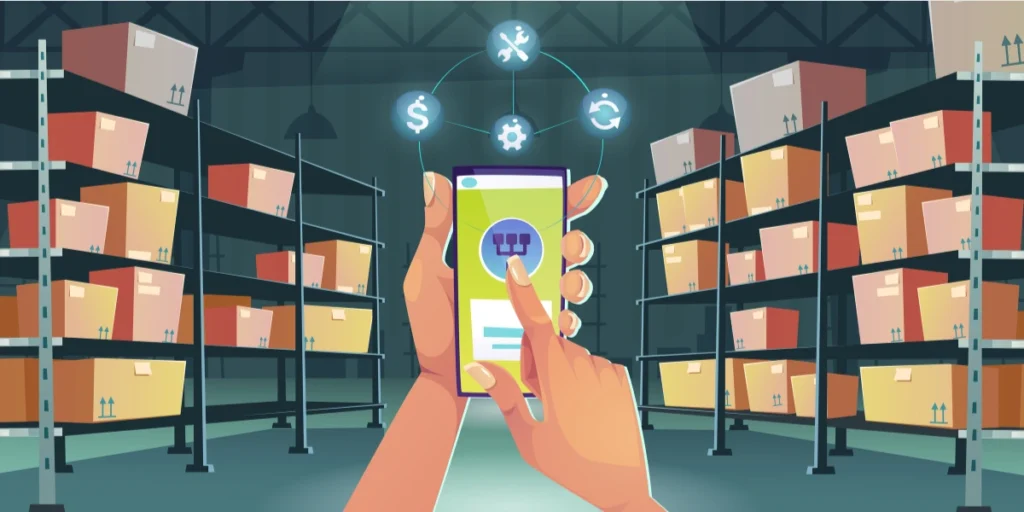
From streamlined workflows to real-time updates, the benefits of utilizing bulk QR Codes redefine how businesses navigate the intricacies of inventory and asset management in the digital era.
Let’s look at some of the benefits.
1. Time efficiency
Bulk QR Code generation significantly reduces the time spent on creating individual QR Codes for each asset.
The automation of the process of generating QR Codes allows for quick and error-free generation, enhancing overall operational efficiency.
2. Accuracy and error reduction
Using a QR Code for inventory management eliminates the potential for manual data entry errors. This ensures that accurate information is stored and retrieved whenever needed.
The unique identifiers within each of the QR Code for inventory management minimize the risk of duplicate or incorrect entries. This further contributes to improved data integrity and asset management.
3. Scalability
Bulk QR Codes provide a scalable solution for businesses with extensive inventories or numerous assets.
The technology adapts seamlessly to growing databases, making it suitable for organizations experiencing expansion.
4. Enhanced traceability
QR Codes enable precise tracking of assets throughout their lifecycle, from procurement to dispatch/delivery/disposal.
The ability to link QR Codes to detailed information allows for comprehensive traceability, aiding in compliance and auditing processes.
These two-dimensional barcodes occupy very little space and can store unlimited information.
5. Cost efficiency
Automating the QR Code for inventory management generation process reduces the need for manual labor, contributing to cost savings.
Improved accuracy and traceability also lead to potential savings by minimizing the risk of lost or misplaced assets.
F. Implementation of QR Code for inventory management in various industries
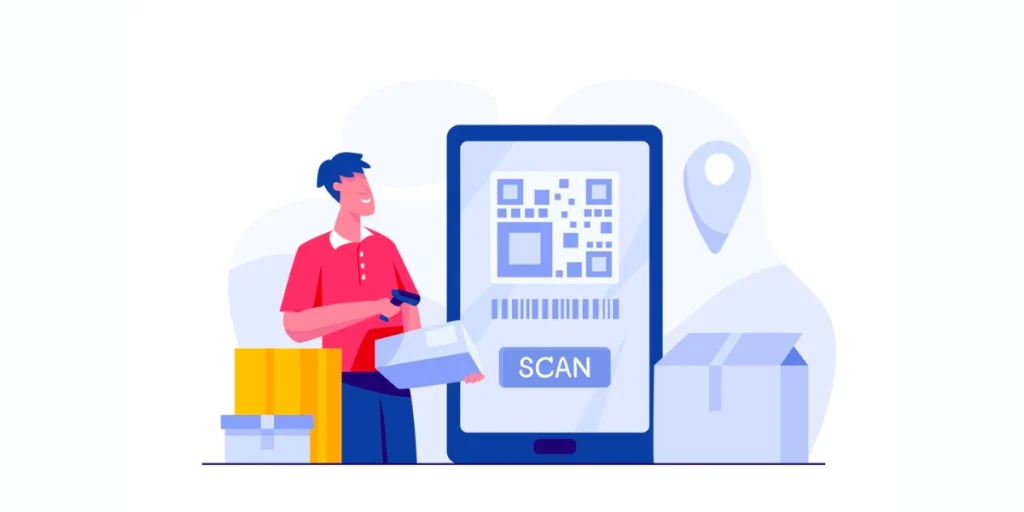
1. Retail
Retailers leverage bulk QR Codes to manage extensive product inventories efficiently. All they need to do is to simply put QR Codes on products and that’s it. These QR Codes can contain information related to the product.
QR Codes on products enable seamless tracking from the warehouse to the point of sale, improving inventory visibility.
2. Manufacturing
In the manufacturing sector, bulk QR Code for inventory management are employed to track raw materials, work-in-progress, and finished goods.
The ability to embed production details within QR Codes aids in quality control and production monitoring.
Click here to learn more about QR Code for Asset Management.
3. Healthcare
Healthcare organizations use QR Codes for tracking medical equipment, pharmaceuticals, and patient records.
Bulk QR Codes enhance the accuracy of inventory management in hospitals, clinics, and pharmacies.
4. Logistics and supply chain
Logistics companies benefit from bulk QR Codes for efficient tracking of shipments, reducing the risk of lost or misplaced goods.
Real-time visibility into the supply chain improves overall logistics management.
5. Education
Educational institutions utilize bulk QR Codes for tracking and managing assets such as textbooks, electronic devices, and laboratory equipment.
This aids in inventory control and minimizes the risk of theft or loss.
G. QR Code design and encoding strategies
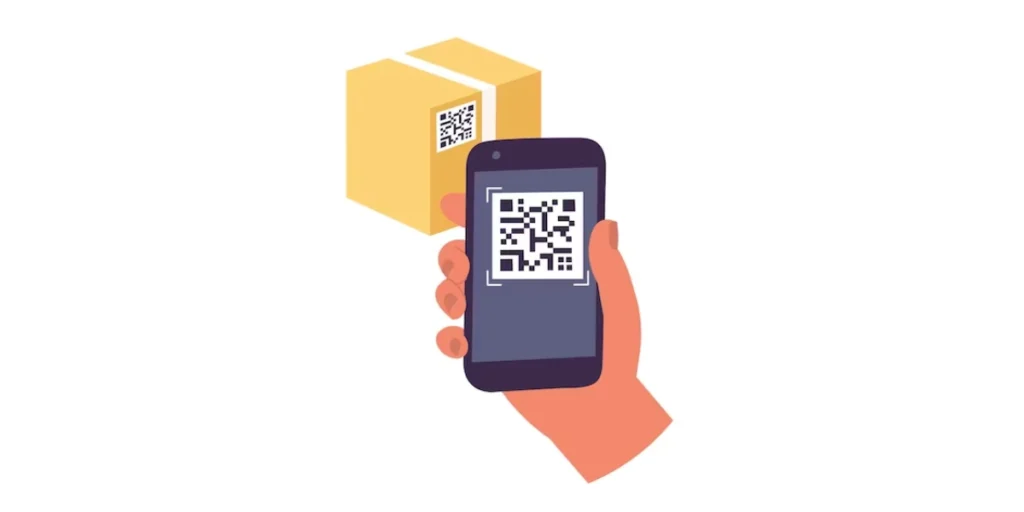
1. Choosing the right printing format
QR Batch offers two export options:
- As Labels: This option allows users to choose the number of QR Codes you want to print per A4 sheet.
- As Images: The second option allows you to choose QR Code image format, size, etc.
Selecting the appropriate QR Code format is crucial for effective communication and readability. QR Codes come in various formats, each designed for specific use cases.
Consider the size of the QR Code in relation to the available space for display. Micro QR Codes are suitable for small items, while standard QR Codes accommodate more data but require more space.
A general rule you can follow is to have a minimum size of 2 x 2 cm (0.8 x 0.8 inches) for printed QR Codes. Ultimately, the chosen format should align with the intended purpose and environmental conditions to facilitate seamless information retrieval.
2. Encoding relevant information
The effectiveness of a QR Code lies in its ability to encode and convey relevant information accurately.
Determining the type and quantity of data to be encoded is crucial for successful implementation.
Different QR Codes support various data types, including URLs, text, numeric data, and more. Careful consideration must be given to the content’s significance and relevance to the end-user.
The QR Code for inventory management use case are static and static QR Codes have limited data storage capacity. The more data one adds, the denser the QR Code becomes. This is likely to hinder its scannability.
This is especially true while adding elaborate text to the QR Code. For simple URLs and numbers (where characters are less) this is not a problem.
When encoding information, it’s essential to strike a balance between data density and scanning reliability. Encoding the right data ensures the QR Code serves its intended purpose effectively.
3. Customizing QR Code designs for easy recognition
Customizing QR Code designs goes beyond aesthetics; it plays a vital role in enhancing recognition and usability.
While QR Code for inventory management, inherently have a standardized appearance, customization options allow for brand integration and improved visual appeal.
Adding a logo, incorporating colors, or modifying the pattern within certain limits can make QR Codes more recognizable and align them with a brand’s visual identity.
The goal is to create a visually appealing QR Code that attracts attention for a positive user experience.
H. Other use cases for bulk QR Codes

1. QR Codes for maintenance logs
In the context of efficient staff tracking and maintenance record-keeping, the traditional method of utilizing paper forms presents challenges. These challenges include manual data entry, high printing costs, and storage constraints.
However, a solution exists in QR Code technology. QR Codes can be scanned via smartphones, eliminating the need for paper forms.
Google Forms can be created and linked to QR Codes for maintenance logs, offering benefits such as unlimited information linking, damage resistance, readability from any direction, quick response time, and space efficiency.
Users can create a digital form for each employee, clicking on which will help the staff to fill their respective work-related details.
These forms can be linked with QR Codes for each employee to streamline the tracking, analysis, and handling of maintenance logs.
To create QR Codes in bulk, a tool like QR Batch can be employed, simplifying the process, Read more at QR Codes For Maintenance Logs.
2. Multi-chanel inventory management
If you business especially engages in multi-channel sales through platforms like e-commerce and marketplaces, effective inventory management becomes paramount.
The introduction of QR Code for inventory management emerges as a modern and intelligent solution for multi-channel inventory management.
The advantages of using QR Codes over traditional barcodes, emphasizing their compact size, damage resistance, 360-degree scannability, and the ability to encode large amounts of information.
QR Codes offer additional features such as automated generation through QR Code API integration, customization for a branded look, and the enhancement of customer experience by ensuring accurate stock information.
You can learn more about how QR Code technology is positioned as a comprehensive solution for streamlined multi-channel inventory management by clicking here.
3. QR Codes in ration management
In rural India, the ration card system faces challenges such as corruption, smuggling, and manual data entry errors.
To address these issues and enhance efficiency, QR Code technology emerges as a solution.
Implementing QR Codes in the ration management system involves creating a mobile application where shopkeepers scan customers’ QR Code-based ration cards.
The data is sent for verification, and upon validation, ration is provided. The central database is updated, allowing better inventory management.
QR Codes contribute to combating corruption by ensuring goods go to authentic customers. They also aid in inventory management and provide a contactless verification method, crucial in times like the COVID-19 pandemic.
To know more, refer to QR Codes in Ration Management.
I. Future Trends and Innovations:

1. Integration with IoT
The integration of Bulk QR Codes with Internet of Things (IoT) devices enhances real-time tracking and monitoring capabilities.
This synergy allows for more dynamic and responsive inventory and asset management systems.
2. Blockchain for enhanced security
Incorporating blockchain technology can provide an additional layer of security for the data stored within QR Codes. Blockchain technology represents a sophisticated database mechanism facilitating transparent information sharing within a business network.
Data in a blockchain database is organized into interconnected blocks, forming a sequential chain.Immutable and transparent ledgers enhance trust and reduce the risk of data tampering within the industry.
3. Machine Learning for predictive analytics
Machine learning algorithms can analyze data from QR Code scans to provide predictive insights.
This facilitates proactive decision-making and helps organizations anticipate trends in inventory management.
4. Augmented Reality (AR) for maintenance and repairs
AR applications linked to QR Codes can provide technicians with real-time information about assets, including maintenance history and repair instructions.
This aids in quick and efficient maintenance procedures.
J. Best Practices

Efficient QR Code usage relies on strategic placement. Here are practical tips for optimal QR Code positioning:
1. Accessibility
Ensure QR Codes are easily visible and within reach by avoiding obscured or poorly lit areas.
Opt for flat, smooth surfaces to maintain QR Code patterns without distortion, avoiding irregular or curved surfaces.
2. Size and resolution
Maintain an adequate size and resolution for easy scanning, with a recommended minimum size of 2 x 2 cm for printed QR Codes.
Create a visual contrast between QR Codes and their background to enhance visibility and scanning accuracy.
3. Avoid distortion
Prevent placement on surfaces prone to movement or distortion, as it may render QR Codes unreadable.
For outdoor or high-traffic areas, consider using protective materials to prevent damage to QR Codes.
4. Information context
Situate QR Codes where users can easily understand their purpose, aligning them with relevant product labels or descriptions.
Include brief instructions near QR Codes if necessary, guiding users on scanning procedures or setting expectations.
5. Testing and validation
For outdoor or high-traffic areas, consider using protective materials to prevent damage to QR Codes.
Regularly test QR Codes after placement to ensure they are scannable and correctly linked to the intended information.
6. Adhere to standards
Follow QR Code guidelines and industry standards for compatibility and readability.
Take the user’s perspective into account, ensuring QR Codes are at a comfortable height and distance for scanning with mobile devices.
K. FAQs: QR Code for inventory management

1. What is Inventory and asset management with bulk QR Codes?
Inventory and asset management with bulk QR Codes is a system that uses QR Codes to efficiently track and manage large quantities of inventory and assets.
Each item is assigned a unique QR Code, allowing for easy identification and retrieval of information.
2. How does bulk QR Code management streamline inventory processes?
Bulk QR Code management streamlines inventory processes by providing a quick and accurate means of data capture.
Scanning QR Codes eliminates manual data entry errors, expediting tasks such as stock-taking, asset tracking, and order fulfillment.
3.What are the key benefits of using QR Code for inventory management and asset management?
QR Codes enhance efficiency, reduce errors, and improve accuracy in inventory and asset management.
They facilitate rapid data retrieval, enable real-time updates, and enhance overall visibility into stock levels and asset locations.
4.Can existing inventory and asset data be integrated with a bulk QR Code Management system?
Yes, most bulk QR Code management systems allow integration with existing databases.
This ensures seamless migration of data, preventing the need for manual entry and preserving historical information. You can use Scanova API for this purpose.
5. How can QR Codes be generated in bulk for inventory and asset items?
QR Code for inventory management can be generated in bulk using specialized software or online tools like QR Batch and QR API. Users can input item details, and the system will generate QR Codes for each item.
These codes can then be printed or attached to the corresponding items.
6. What happens if a QR Code is damaged or lost?
In the event of a damaged or lost QR Code, most systems offer the option to generate a new code and link it to the same item.
This ensures continuous tracking and management without disrupting the overall system.
7. Is it possible to update information linked to a QR Code in real-time?
Yes, one of the advantages of using QR Codes is the ability to update information in real-time.
Any changes in inventory status, location, or details can be instantly reflected by updating the associated QR Code information in the system.
8. Can Bulk QR Codes be used for both fixed and mobile assets?
Yes, bulk QR Codes are versatile and can be applied to both fixed assets, such as equipment in a facility, and mobile assets, including items that move between locations.
This flexibility makes it suitable for various industries.
9. How secure is the data stored within a QR Code system?
Security measures vary, but reputable systems implement encryption protocols and access controls to ensure the confidentiality and integrity of the data. It’s essential to choose a system with robust security features.
Since QR Batch is developed by Trycon, which is GDPR compliant and is 27001:2013 certified, you can rely on it
10. Are there any industry-specific applications for bulk QR Codes?
Yes, bulk QR Codes are widely applicable across industries. They find their use in retail for inventory control, manufacturing for supply chain management, healthcare for tracking medical equipment, and more.
Their adaptability makes it a valuable solution in diverse sectors.
11. What are the benefits of using QR Code for inventory management and asset management?
QR Codes offer time efficiency, accuracy and error reduction, scalability, enhanced traceability, and cost efficiency
12 How are QR Codes generated in bulk?
QR Codes can be generated in bulk using tools like QR Batch or by integrating inventory systems with Scanova’s API.
Conclsion
Bulk QR Codes in Inventory and Asset Management represent a transformative leap toward efficiency, accuracy, and scalability in modern business operations.
The benefits of time-saving, accuracy, scalability, enhanced traceability, and cost savings make QR Codes a valuable asset for organizations across various industries.
As technology continues to evolve, the integration of QR Codes with emerging technologies is set to redefine how businesses approach inventory and asset management.
The future promises even greater innovation, providing organizations with unprecedented capabilities to manage their assets with precision and foresight.
Embracing Bulk QR Codes is not just a step forward; it’s a leap into a future where efficiency and accuracy are at the forefront of organizational success.



